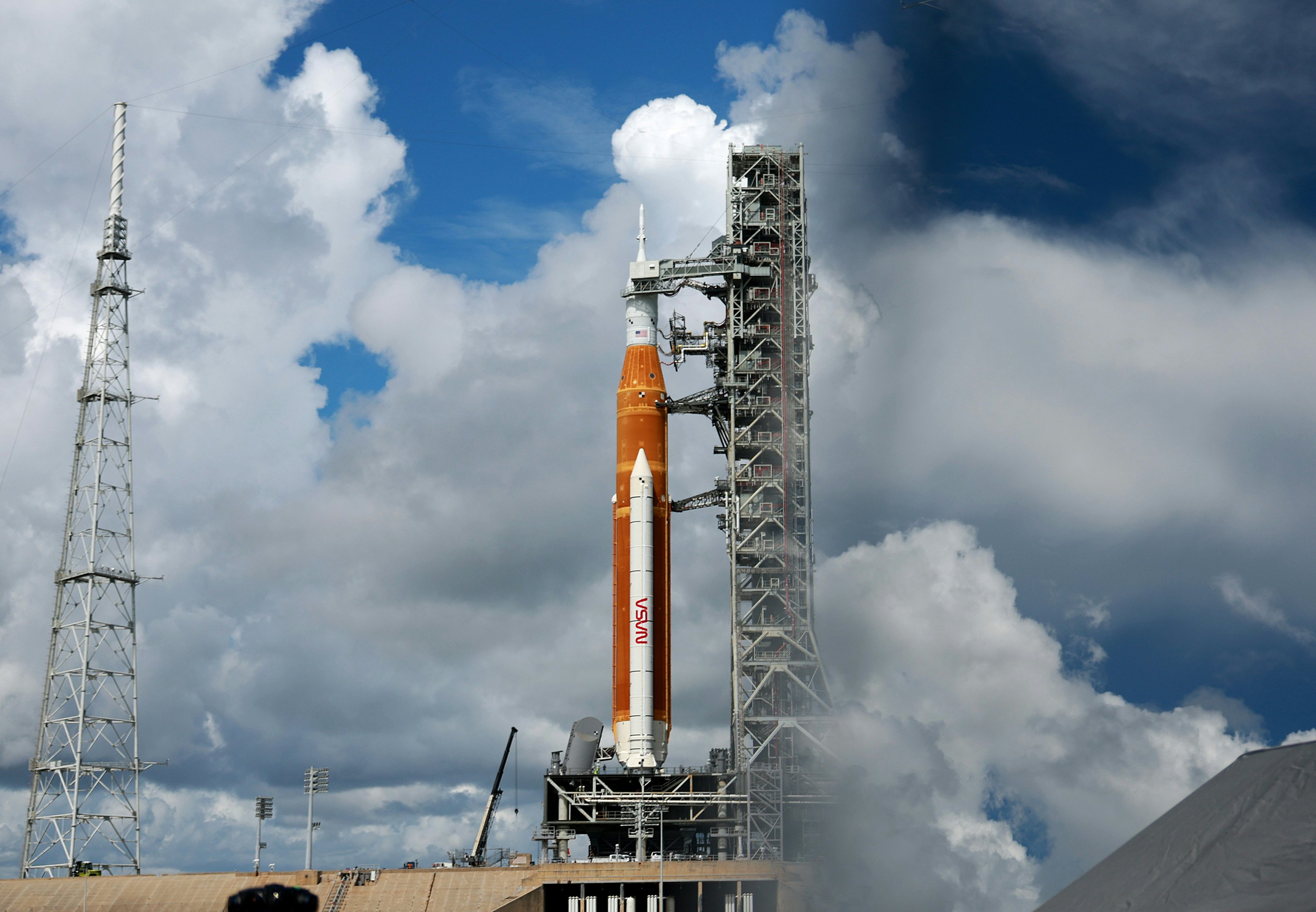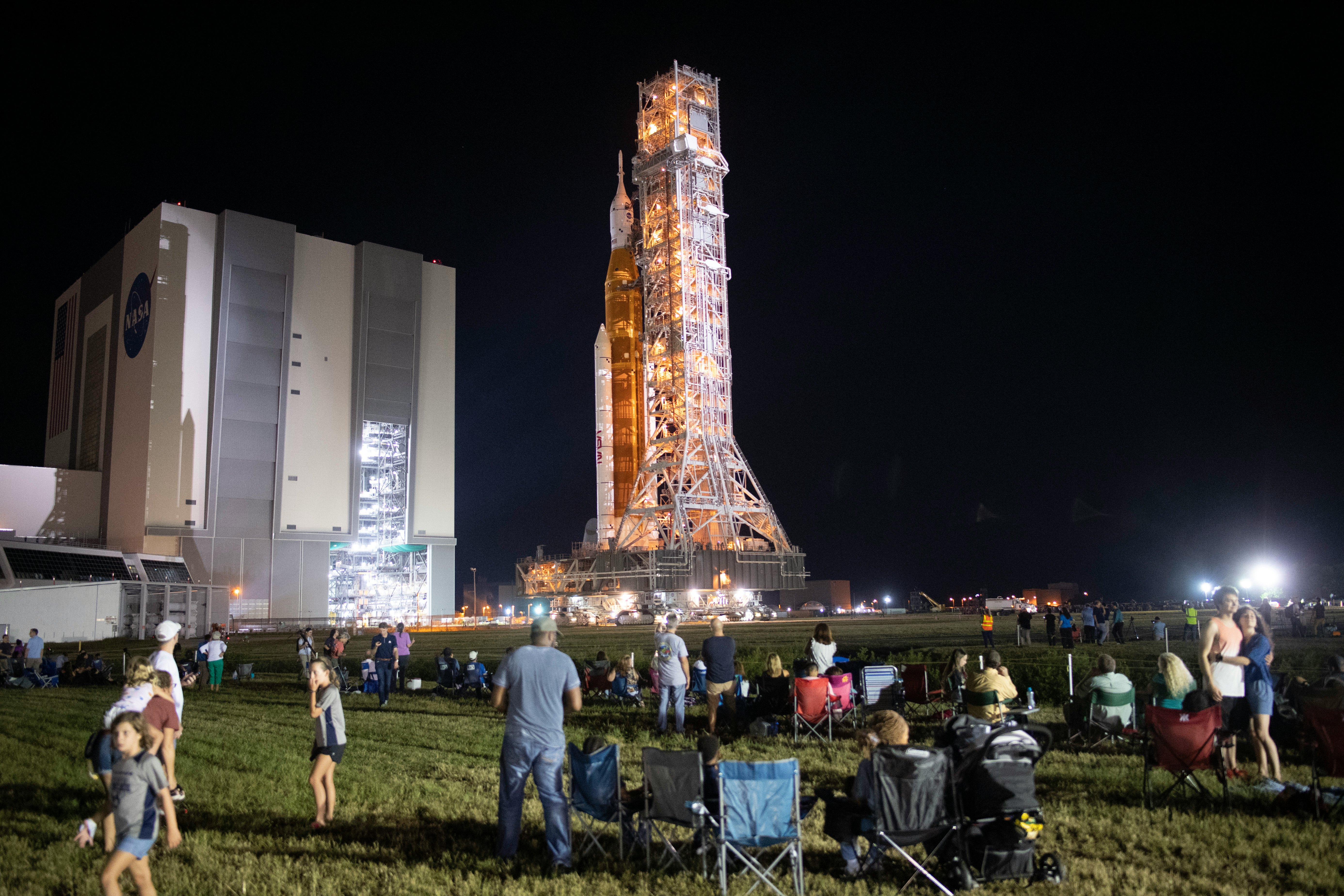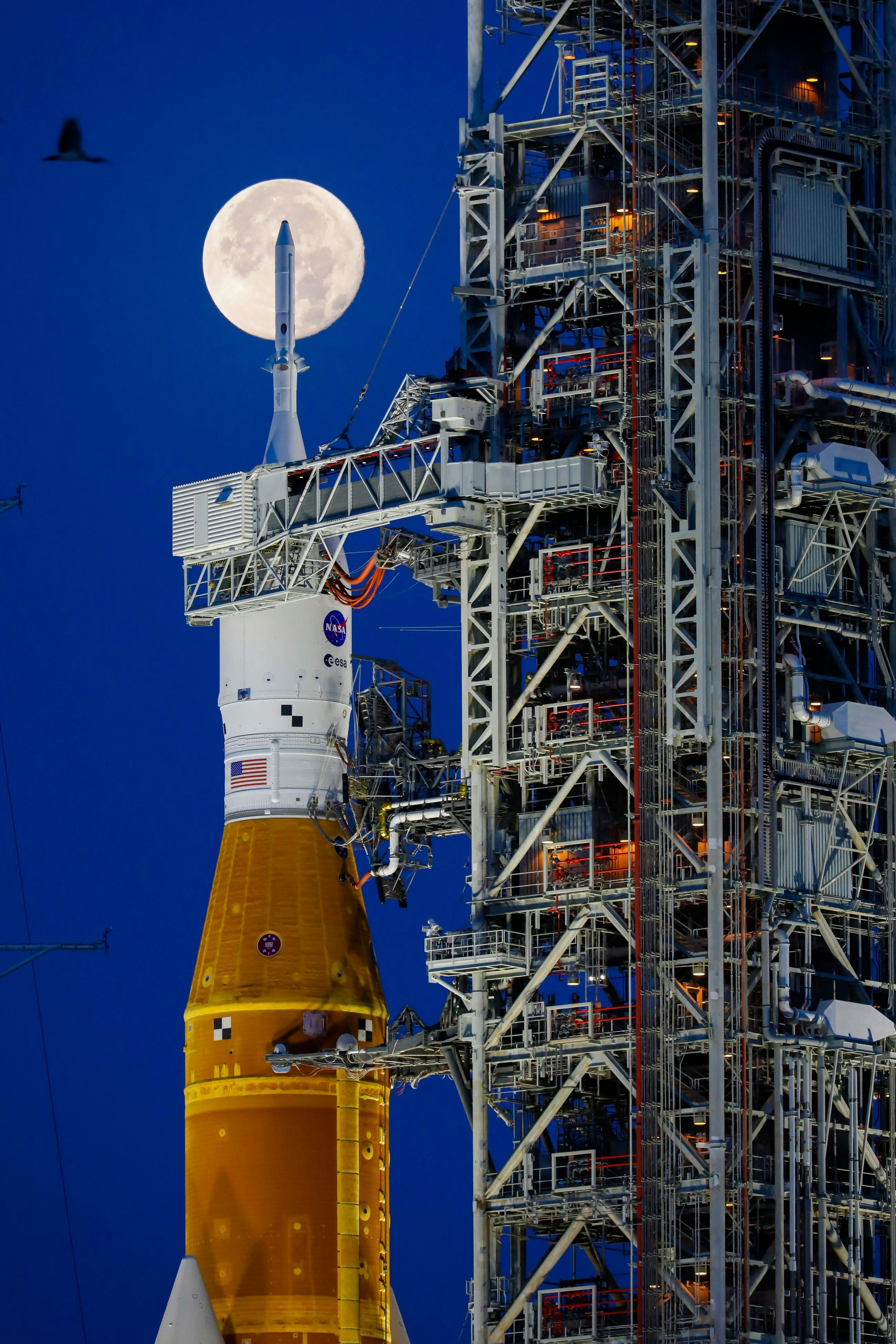
Artemis I was scheduled to lift off from Launch Pad 39B at 8:33 AM Eastern Time today, August 29, on its way to the Moon. Unfortunately, NASA had to scrub today’s launch, as a problem arose with cooling down one of the four core-stage engines.
The space agency still has not announced when exactly it will attempt another launch, but it has two more opportunities: September 2 and 5. August 30 and August 31 aren't options because launching on those days would force Orion to fly in Earth's shadow, without enough sunlight reaching its solar panels. Launching on September 2 or September 5, however, Orion can cruise in the sun all the way to the Moon.
Delays in launches such as this one are not uncommon. In fact, NASA had scheduled Artemis I to launch earlier in 2022, but a fuel leak caused problems during crucial pre-launch tests.
Artemis I Mission Launch Date and Time
After a series of delays, NASA’s Artemis I mission is on the brink of launch. The uncrewed mission will mark the first step in the agency’s ambitious plan to return astronauts to the surface of the Moon by 2025. Here’s everything you need to know about the Artemis I mission and how to watch the historic launch.
Artemis I had its first opportunity to launch on August 29, but NASA scrubbed the mission due to engine problems. The next launch window is on September 2.
How to watch the Artemis I launch
When NASA attempts to launch again, you can watch the Artemis I Launch on NASA’s live-streaming channel, NASA Live.
Starting one minute after liftoff, you can follow the Orion capsule on its journey to the Moon and back on NASA’s Artemis Real-time Orbit Website, or AROW (a clever pun on the Greek goddess Artemis’ skill at archery). The site visualizes data from sensors on the Orion spacecraft, providing information about its position, speed, alignment, and other flight details. Head over to the NASA Orion Twitter account for a link.
NASA will also be sharing photos and videos from space. A few hours after launch, Orion will point its cameras back toward the rapidly receding Earth for a few photos. And throughout the mission, hardcore space fans can tune into a live stream of one of NASA’s test mannequins, nicknamed Commander Moonikin Campos, who is testing a new spacesuit for NASA: the Orion Crew Survival System flight suit. (If you want a sneak preview, Moonikin and the other Artemis I mannequins star in their own comic miniseries.)

What will Artemis I do?
Artemis I is an uncrewed (except for the mannequins) test of the Space Launch System rocket and the Orion crew capsule. Its primary goal is to make sure the rocket, the capsule, and the mission plan are all safe enough for astronauts to fly.
While Artemis I orbits the Moon, engineers back on Earth will monitor its performance, and they’ll collect more data from sensors and recorders in the capsule once it returns to Earth. Orion's seats, each occupied by a specially-designed mannequin, are rigged with sensors to measure acceleration and vibration during launch and re-entry. Each mannequin carries sensors to measure radiation exposure, and two of them are testing special vests to help protect against too much radiation.
Combined, that data will help engineers confirm that the capsule is safe enough to send astronauts to the Moon in. It will also help design more realistic, more useful training simulations for the crews of Artemis II and Artemis III.
How will Artemis I get to the Moon?
A few minutes after launch, a rocket stage called the Interim Cryogenic Propulsion Stage will fire, accelerating the spacecraft to roughly 40,000 kilometers per hour — fast enough to break free of Earth’s gravity and set off for the Moon. Mission planners call this crucial moment the trans-lunar injection burn.
Five days after launch, Orion will swoop past the Moon on its closest approach, just 96 kilometers above the rocky lunar surface. A quick firing of Orion’s boosters will slow the spacecraft down enough for the Moon’s gravity to catch the spacecraft and pull it into what’s called a distant retrograde orbit; called retrograde because Orion will orbit the Moon “backwards,” opposite the direction that the Moon rotates, and distant because at its farthest, this highly eccentric orbit will carry Orion more than 64,000 kilometers past the Moon before it swings back.
At that point, Orion will be further from Earth than any Moon mission has ever been — a whopping 450,616 kilometers away, on the far side of the Moon — beating Apollo 13’s 52-year-old distance record of 400,171 km.
NASA’s CAPSTONE CubeSat, which launched in late June, already did a trial run of this orbit to make sure it would work well for Artemis I.
Eventually, Orion will make another close flyby of the Moon, using the rocky satellite’s gravity to accelerate enough to escape lunar orbit and set a course for home.

When will Artemis I return to Earth?
After 42 days, 3 hours, and 20 minutes in space (not that anyone’s counting), the Orion capsule will plunge into the Pacific Ocean just off the coast of San Diego, California, where a recovery ship and several helicopters will be waiting to greet it.
The recovery vessel knows where to be because Orion will make a much more precise landing than the Apollo capsules were able to do. That's not only thanks to more advanced navigation equipment, but to a new re-entry technique called skip entry, which gives the incoming spacecraft a longer flight range on its way down, so it has enough time and reach to direct itself to a chosen landing spot.
It looks like a rock skipping across the surface of a pond, only it's happening at roughly 38,000 kilometers per hour. Orion will dip into the upper edge of Earth's atmosphere just long enough for the atmosphere's friction to slow it down a little, and then it will skip back out into space again before making the final descent. That first dip into the atmosphere helps spread out the heat and G-forces of re-entry, which will help make the process safer and smoother for future missions' crews.
NASA will livestream the splashdown, courtesy of cameras on the recovery ship and helicopters, on its NASA Live channel.
When will Artemis II launch, and when will we land on the Moon again?
Artemis II is scheduled to launch in 2024. With a crew of astronauts aboard, the Artemis II mission will orbit the Moon before returning to Earth. And in late 2025, Artemis III will carry astronauts to a landing site near the Moon’s south pole, where two members of the crew will become the first humans to set foot on another world since 1972.







